Students read the article and learn how crab undergoes a complete metamorphosis. Students explore each stage of crab life cycle and look at the pictures.
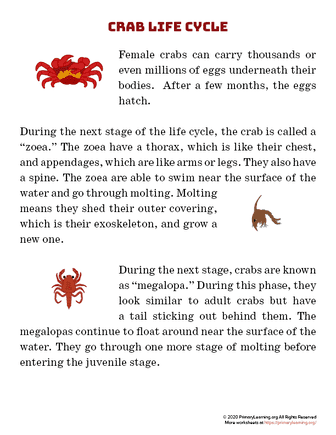
Crab Life Cycle Worksheets & Printables
Crab life cycle worksheets are a fun way to learn how crabs grow. These worksheets show the stages of a crab’s life, starting when it hatches from an egg, then grows into a young crab, and finally becomes an adult. The worksheets have visuals to help children understand the changes crabs go through, like molting, which is an essential part of their growth. Whether in school or at home, these worksheets make learning about how crabs transform easy and fun. They’re an excellent tool for exploring the life cycle of crabs.
Have children research what “molting” is and when it occurs during the crab’s life cycle.
Incorporate art into your teaching by having children make their own three-dimensional crabs! A section of an egg carton or a paper bowl painted red works well as the body. Use pipe cleaners for the legs. Clothespins, painted red, make great claws. Lastly, add googly eyes.
Make a cross-curricular connection by learning about crabs as a source of protein.
Challenge children to research three interesting facts about crabs. Have them orally share their facts with each other or create their own books about crabs.
During the next stage of the life cycle, the crab is called a “zoea.” The zoea have a thorax, which is like their chest, and appendages, which are like arms or legs. They also have a spine. The zoea are able to swim near the surface of the water and go through molting. Molting means they shed their outer covering, which is their exoskeleton, and grow a new one.
During the next stage, crabs are known as “megalopa.” During this phase, they look similar to adult crabs but have a tail sticking out behind them. The megalopas continue to float around near the surface of the water. They go through one more stage of molting before entering the juvenile stage.
At this time, the crabs begin living at the bottom of the water. They continue to molt, which helps them grow. Their hard shell softens as a new shell is formed underneath. The hard shell cracks open and the crab must make its way out of it. This can take hours. Once the crab is free from its old shell, it must be very careful until the new shell hardens.
The last stage of the crab’s life cycle is adulthood. Adult crabs can live for over ten years. They eat mostly algae but some also eat things like clams and fish. Crabs work together to find food and help protect each other.

Students read the article and learn how crab undergoes a complete metamorphosis. Students explore each stage of crab life cycle and look at the pictures.
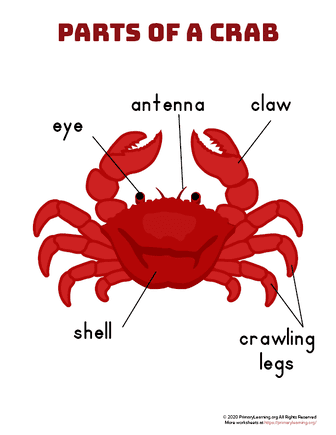
This worksheet allows students to learn the parts of a crab. Two versions included: the picture of a crab with labels and fill the labels with no word bank.
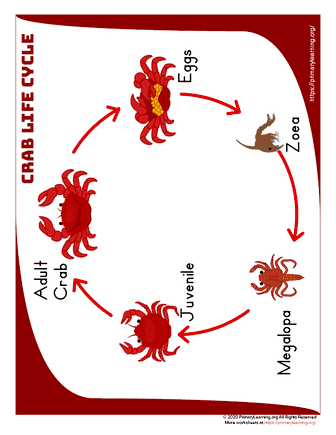
With this crab life cycle anchor chart, students understand that everything goes through a life cycle and how crab undergoes a metamorphosis.

Students learn to recognize the difference between facts and opinions. Students read each statement about crab and determine whether it is a fact or opinion.

This is a fun science activity for elementary students help students learn about crab life cycle.
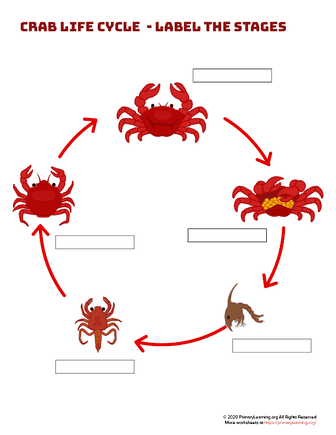
Students use this worksheet to label the stage of crab life cycle. This activity is great to reinforce the crab life cycle vocabulary and practice sequencing.

Students will love creating a life cycle spinner wheel and learning about different stages of the crab life cycle. This fun activity is a great addition to your lesson.
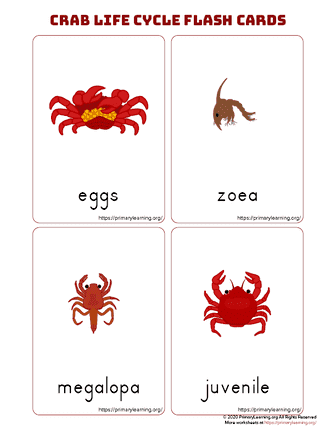
This activity is great to introduce the life cycle of a crab crab and practice sequencing order.
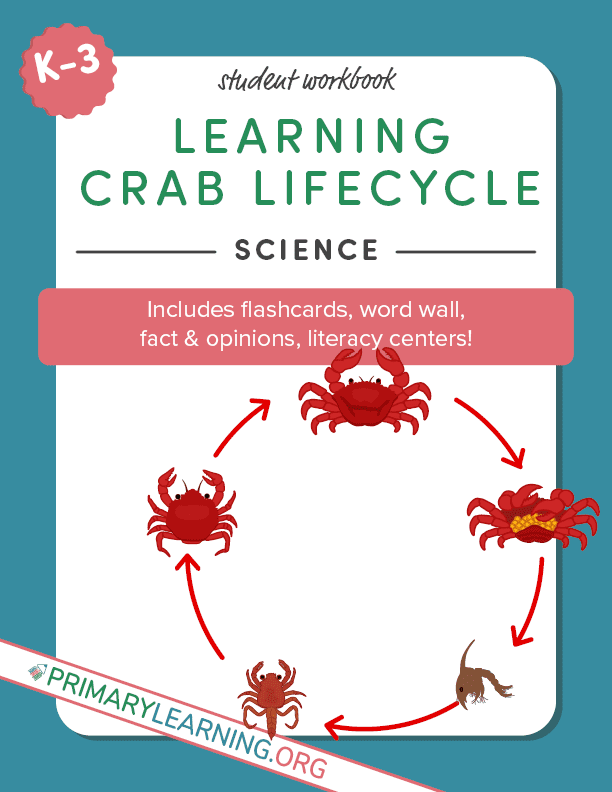
With this workbook, students explore the crab life cycle. The main goal is to learn the transformation of the crab from the egg to the adult in a fun and meaningful way.
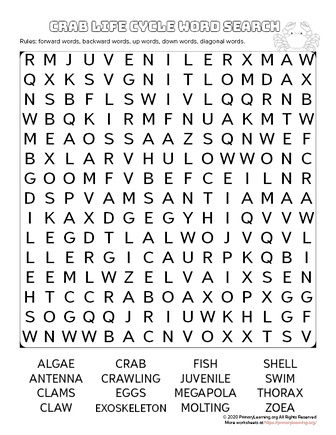
This word search helps students practice vocabulary and build their understanding of the crab life cycle.

With this crab life cycle activity, students will match the image on the left with a word on the right.
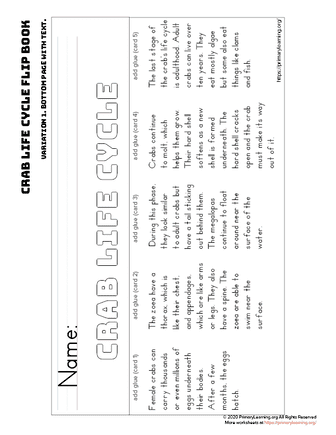
Students will love to make this crab life cycle flipbook! Each part of the crab life cycle is explained and illustrated.
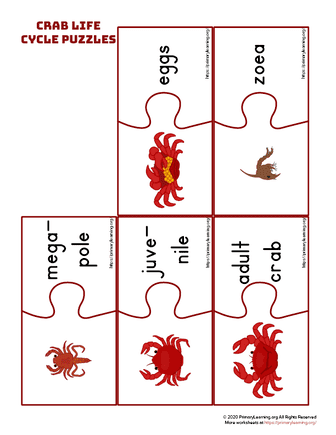
Students will love learning about different stages of the crab life cycle with these hands-on puzzles.
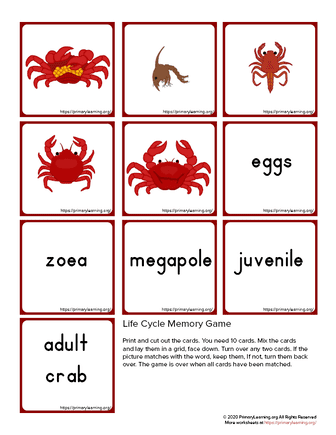
Playing crab life cycle memory game is not only good for concentrating skills, but also reinforce the life cycle vocabulary.

Children are natural scientists and love learning about animals. Use this crab life cycle cards for reading about the metamorphosis.
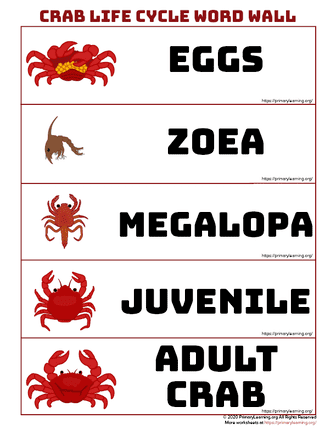
Use the crab life cycle word wall to build vocabulary and writing skills, as well explore stages of the crab life cycle.

For this sequencing writing prompt activity, students use the pictures to tell about the transformation of a crab.
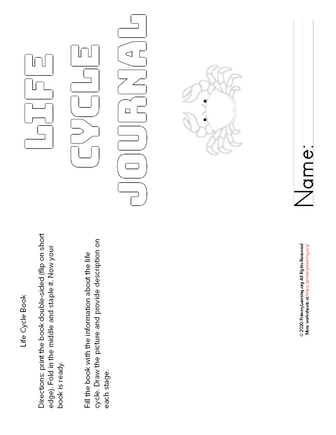
Let your students practice the importance of science skills by collecting data (through observation or other resources) and drawing conclusions.
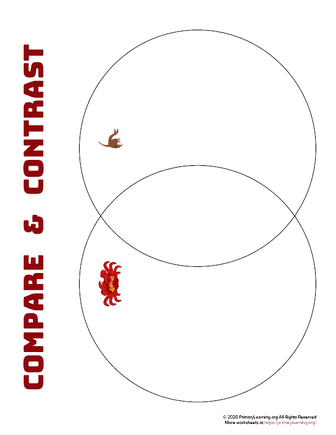
This activity is perfect to compare and contrast different stages of crab life cycle.
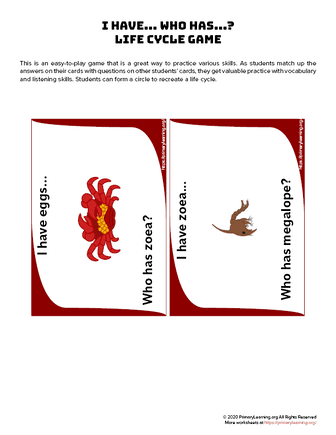
The easy-to-play crab life cycle game is a great way to practice various skills. Students form a circle to recreate the crab life cycle.
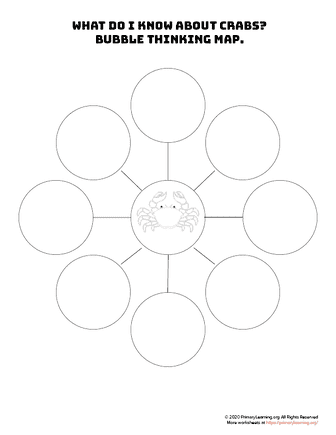
Students use crab bubble thinking map to organize the information they have gathered. A bubble thinking map helps them visualize the information.
Join PrimaryLearning.Org for Free Access
By clicking 'Create Account' above, I agree that I have read and agree to PrimaryLearning.Org's Terms of Use and Privacy Policy.
Members receive PrimaryLearning.Org emails. You can unsubscribe anytime.